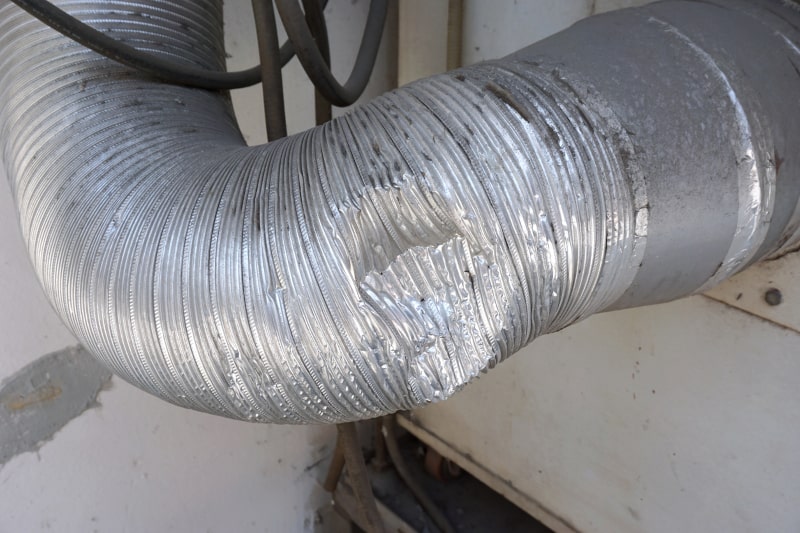Leaky ductwork in Frederick, MD, can result from poor installation, age, or issues with the structure of the building that houses them. No matter the cause, locating and repairing the leak as soon as possible is essential to reduce energy costs and improve indoor air quality. Here’s how to track down a leak in your ductwork.
Check for Visible Damage
An HVAC service technician can visually inspect your ductwork. They’ll look for any holes, gaps, or tears that could be letting air escape, paying particular attention to areas where two pieces of ductwork meet, such as a joint or elbow. They’ll also check any seams and joints for signs of separation.
Assessing the insulation around your ductwork is also important. Worn, torn, or missing insulation could also allow air to escape. Damp spots or biological growth on the insulation can indicate a leak as well.
Use a Smoke Pencil
A smoke pencil is a tool that creates a stream of smoke which can help detect air leaks in your duct system. A service technician will plug the ends of the ducts and then run the smoke pencil along the length of the ductwork. If they see a smoke stream, it indicates an air leak.
They’ll mark the area of the leak with a piece of tape to easily find it when ready for repair. After this inspection, we’ll have you turn on fans or other equipment in your home to remove any remaining smoke.
Use a Leak Detector
Duct leakage testers, or leak detectors, are tools designed to measure the amount of air leakage in your duct system. They use a fan to pressurize the ducts and measure how much air escapes in conditioned and unconditioned spaces. This data can help pinpoint the exact location of the leak.
If your ductwork leaks, the detector will indicate that by displaying a reading. The higher the reading, the more air that’s escaping. A professional can interpret the results and determine the best course of action, which includes aeroseal duct sealing.
Check for Old Duct Tape
The presence of old duct tape along your ductwork shows a previous leakage repair. Duct tape is never a viable solution for sealing ducts. Over time, it can deteriorate and cause further damage and leakage.
Our service technicians will look for any pieces of old duct tape that could be contributing to air loss and recommend a long-term solution. One of the most reliable methods of sealing ducts is with an Aeroseal duct sealant. It’s not only water-proof but also boosts the air quality in your home.
Check for Poor Installation
Poorly installed ductwork can be the cause of air leaks. We’ll look for places where two pieces of ductwork that should be securely connected are not joined. Poorly installed ductwork won’t create a strong seal and could allow air to escape.
Our team will also check the insulation quality. If it’s not tight against the ductwork, air could also escape through this area. We’ll see if the insulation is thick enough, as thin insulation won’t create an airtight seal and could let conditioned air escape.
Use a Thermal Imaging Camera
A thermal imaging camera is an advanced tool that can detect hot and cold spots. This imaging technology can help locate air leaks in your ductwork and other areas like walls or windows.
Thermal imaging cameras measure the temperature difference between two objects. In the case of a duct system, they can help us determine where air is escaping. If there’s a sudden change in temperature between two areas, it could indicate a leak.
Tracking and sealing air leaks in your ductwork helps improve your home’s energy efficiency and ensures you get the most out of your HVAC system. Contact Griffith Energy Services to help assess your air ducts and determine whether it’s time to look into investing in Aeroseal duct sealing. Our team has the experience, tools, and knowledge to get the job done right!
Image provided by iStock




